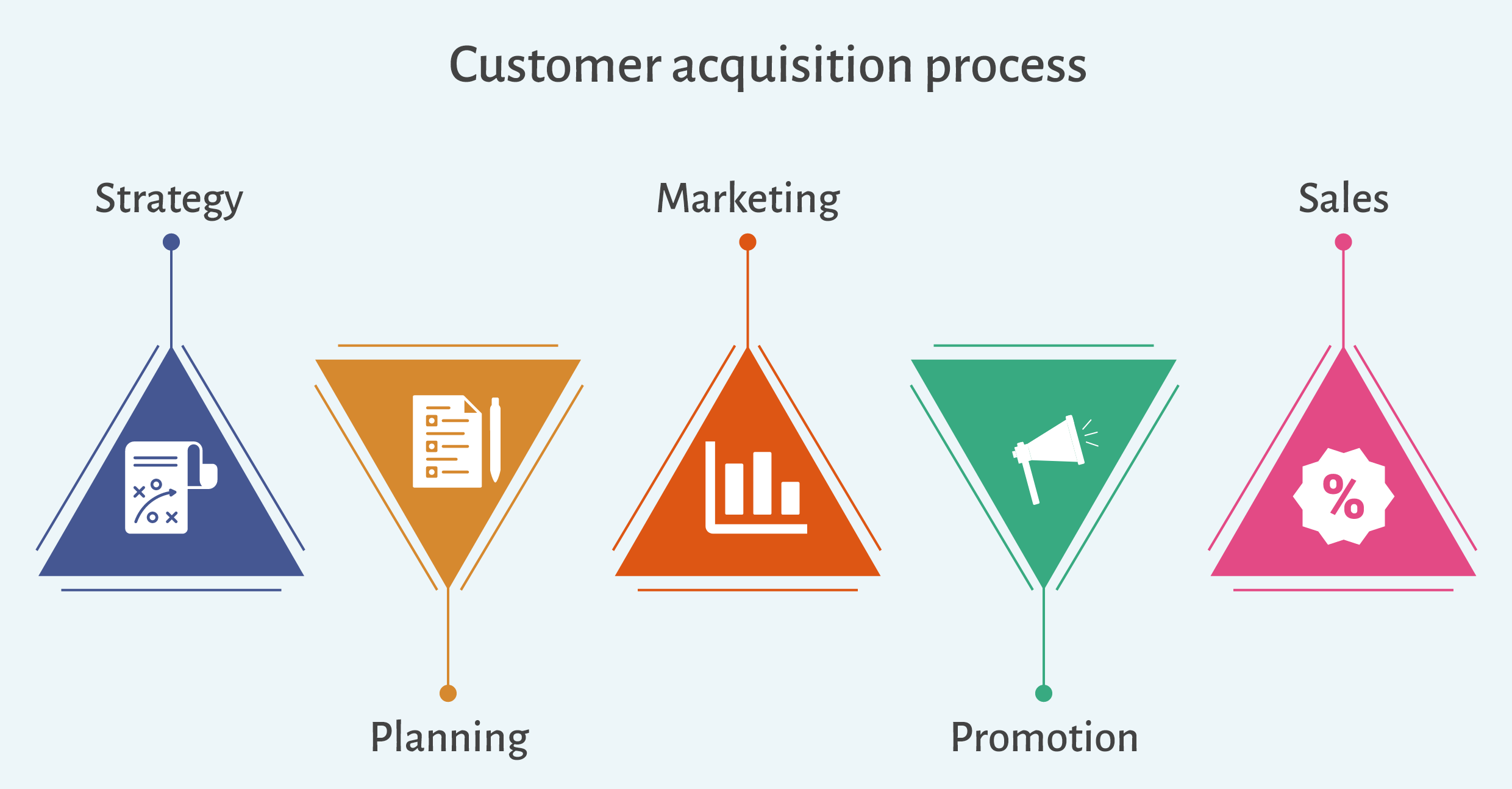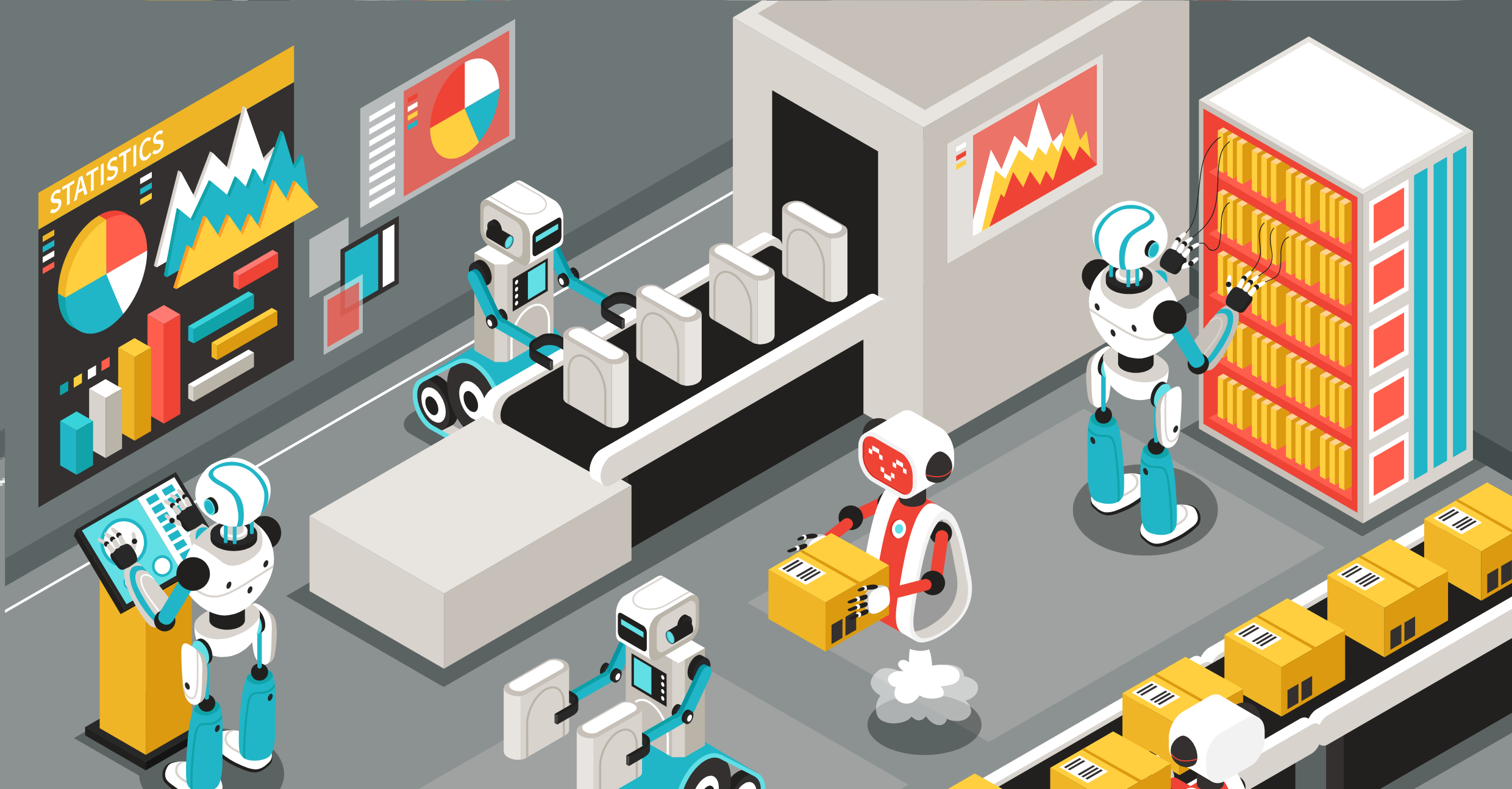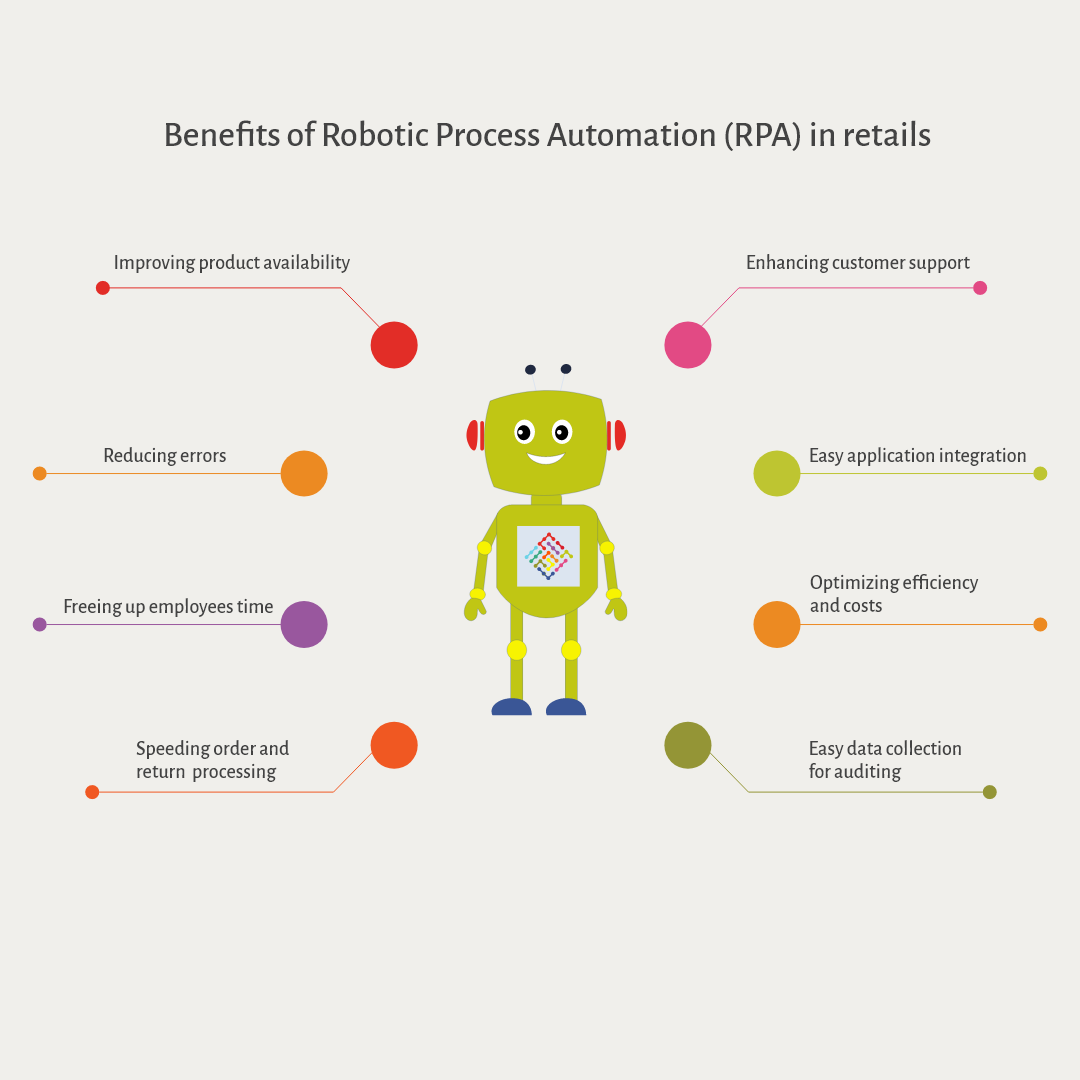Talosnation
Hey there! Have you ever thought about how tough it is for retailers to attract and retain customers? It's a tricky game that requires significant investments in marketing and sales efforts. Not to mention, you need to have a thorough understanding of customer behavior and preferences.
One of the biggest challenges retailers face is the high cost of acquiring new customers. Think advertising, promotion, and sales commission expenses, as well as the cost of maintaining and updating customer databases and tracking systems. Plus, it can take a long time to convert new customers, which makes it tough to meet growth objectives.
That's why more and more retailers are turning to Robotic Process Automation (RPA) technology to overcome these challenges. With RPA, software robots can do repetitive and rule-based operations, like data entry, customer segmentation, and lead tracking. By automating these procedures, retailers can cut costs, boost productivity, and improve overall customer acquisition success.
RPA technology offers a variety of benefits for retailers, including quicker and more accurate data processing, lower manual labor expenses, and greater data security and compliance. Plus, by providing real-time insights into consumer behavior and purchase patterns, RPA can help retailers better understand their customers' needs and preferences.
In the next section, we'll dive deeper into the issues retailers face with customer acquisition and show you how RPA technology can help solve these problems. We'll also share some specific examples of how retailers are using RPA for customer acquisition and talk about the best ways to adopt RPA in a retail context.

Alright, let's dive in and take a closer look at the world of retail customer acquisition. If you're a retailer, chances are you're always on the hunt for new customers to add to your business. But, as we all know, this is often easier said than done.
The process of customer acquisition in retail can be tricky. It involves a lot of different moving parts, including advertising, marketing, and sales. And unfortunately, it can also be pretty darn expensive. Depending on your industry and marketing techniques, the cost of acquiring a new customer can range from a few bucks to upwards of fifty dollars! That might not sound like a lot at first, but when you consider how many customers you're hoping to acquire, those numbers can quickly add up.
But that's not the only challenge retailers face when it comes to customer acquisition. The process can also be time-consuming. Depending on the effectiveness of your marketing efforts and the quality of your products or services, it might take weeks or even months to bring in new customers. And as you might imagine, this can be a drain on your resources. After all, you still need to invest in marketing and advertising throughout that time, even if you're not seeing a lot of return on investment just yet.
So what's the impact of these challenges on business performance? For starters, they can lead to decreased profitability. When you're spending a lot of money to acquire new customers and not seeing much in the way of returns, that's not great news for your bottom line. Plus, smaller retailers with limited budgets might struggle to compete with larger businesses that can outspend them on advertising and marketing efforts.
In addition to decreasing profitability, these challenges can also limit avenues for growth. When the cost of acquiring new customers is high, it can be tough to justify investing in the process at all. And that, in turn, can limit your ability to expand your business and earn more income in the long run. It's a vicious cycle!
What’s the solution?

So, until now, we dove into the wild world of customer acquisition. It's a tough game out there, with high costs and long lead times making it a real challenge for retailers to bring in new customers. But fear not! We've got a secret weapon that's changing the game: RPA technology.
If you're not familiar with RPA, don't worry. It's not some new dance craze that you're missing out on. RPA stands for "Robotic Process Automation," which basically means using software robots to automate repetitive tasks. And let me tell you, these bots are not messing around. They can handle everything from data entry to lead nurturing, making the customer acquisition process smoother and more efficient than ever before.

One of the biggest benefits of RPA technology in retail customer acquisition is cost savings. We all know that bringing in new customers can be a pricey endeavor, with marketing and advertising expenses quickly adding up. But with RPA, retailers can automate those repetitive tasks and save big on labor costs. Plus, by analyzing consumer behavior and preferences, RPA can help retailers optimize their outreach efforts and reduce advertising expenses. It's a win-win!
But it's not just about saving money. RPA can also boost efficiency, which is crucial in the fast-paced world of retail. By automating lead qualification and follow-up, retailers can speed up the customer acquisition process and increase revenue. Plus, by automatically updating customer records and interactions, RPA can help retailers better manage their client data and improve customer service. And we all know that happy customers mean repeat business and positive word-of-mouth.
So how exactly can RPA be used in retail customer acquisition? There are a ton of different use cases, from automating email marketing campaigns to booking meetings with prospective clients. RPA can even handle follow-up tasks like sending thank-you notes and emails after appointments. It's like having a personal assistant for your customer acquisition efforts!
And the best part? RPA technology can have a huge impact on business performance. By saving money, boosting efficiency, and improving customer service, retailers can see higher conversion rates and more revenue. It's a game-changer, folks.
But don't just take our word for it. In the next section, we'll be sharing real-world examples of how retailers have successfully implemented RPA technology in customer acquisition. Plus, we'll be diving into the nitty-gritty details of how to effectively implement RPA in your own retail operations. So buckle up, because we're just getting started!
Next up: How RPA Technology Can Help. Get ready to have your mind blown!
Are you ready to dive into the exciting world of RPA technology and retail customer acquisition? If so, you're in luck, because I have some tips and tricks that will help your business succeed in implementing RPA technology.
First things first, let's talk about the critical steps that firms should follow when implementing RPA technology for retail customer acquisition. These steps are crucial for achieving effective integration with current systems and processes, and they include establishing precise goals and objectives, determining the best RPA solution for your business, designing the RPA solution, implementing the RPA solution, and optimizing and maintaining the RPA solution.
Now, you might be wondering why it's so important to follow these steps. Well, the answer is simple. By following these steps, you'll be able to identify the exact operations that will be automated, choose the best RPA solution for your firm, plan out the processes to be automated, apply the RPA solution to every part of your business, and analyze its performance on a regular basis to ensure it continues to provide the required results over time. Sounds pretty good, right?
But wait, there's more! In addition to following these critical steps, there are also some best practices that firms should keep in mind to ensure success when using RPA for retail customer acquisition. These best practices include starting small, engaging stakeholders, establishing clear metrics, and ensuring scalability.
Starting small is a great way to develop expertise and trust in the technology before tackling more difficult operations. Engaging stakeholders, including IT, operations, and customer service teams, is essential to securing buy-in and support for the solution. Establishing clear metrics to assess the effectiveness of the RPA solution and reporting on progress towards these goals on a regular basis is also crucial. And finally, ensuring scalability is important to guarantee that the RPA solution can support future organizational growth and changes.
In the next section, we will examine real-world examples of retail organizations that have effectively adopted RPA in customer acquisition, providing insights and important takeaways for businesses that want to do the same.
Now that we've covered the best practices for implementing RPA in retail customer acquisition, let's take a look at some real-world examples of companies that have successfully integrated this technology into their operations.
One company that has effectively utilized RPA in customer acquisition is Walmart. The retail giant implemented RPA technology to automate its back-office processes, including tasks such as customer acquisition, invoice processing, and data entry. By automating these repetitive tasks, Walmart was able
to free up its employees to focus on more strategic and customer-facing activities. Additionally, RPA helped Walmart reduce costs and improve efficiency, resulting in a better overall customer experience.
Another company that has found success with RPA in customer acquisition is Nordstrom. The high-end department store chain implemented RPA to automate its price management system, which involves the constant updating and monitoring of prices across various products and locations. By automating this process, Nordstrom was able to improve accuracy and reduce the likelihood of errors, resulting in a more streamlined and efficient pricing system. This, in turn, allowed the company to offer competitive prices and promotions to its customers.
A third example of a company that has effectively integrated RPA into its customer acquisition operations is Target. Target utilized RPA to automate its inventory management system, which involves tracking and monitoring the availability of products across its various stores and warehouses. By automating this process, Target was able to improve accuracy and reduce the likelihood of out-of-stock items, resulting in a better overall customer experience. Additionally, RPA helped Target reduce costs and improve efficiency, allowing the company to offer more competitive prices to its customers.
One other example is Sephora, which used RPA to analyze customer data and gain insights into their shopping behavior and preferences. By automating this process, Sephora was able to quickly identify trends and adjust their product offerings and marketing strategies accordingly, resulting in higher customer engagement and sales.
The key takeaway from these case studies is that RPA can be a powerful tool for improving efficiency, reducing costs, and enhancing the overall customer experience in retail customer acquisition. By automating repetitive and time-consuming tasks, companies can free up their employees to focus on more strategic and customer-facing activities. Additionally, RPA can help to reduce the likelihood of errors and improve accuracy, resulting in a more streamlined and efficient operation.
Another important insight from these case studies is that companies should take a methodical approach to implementing RPA in customer acquisition. By following best practices such as starting small, engaging stakeholders, and establishing clear metrics, companies can ensure that their RPA implementation is successful and sustainable over the long term. Additionally, companies should build their RPA solutions with scalability in mind, to ensure that they can support future organizational growth and changes.
Ultimately, the successful implementation of RPA in retail customer acquisition requires a methodical approach and adherence to best practices. By following the examples set by companies like Walmart, Nordstrom, and Target, companies can leverage RPA technology to improve efficiency, reduce costs, and enhance the overall customer experience.

Well, folks, that's a wrap! We've explored the world of RPA and its potential for revolutionizing the retail customer acquisition process. From increased efficiency to improved customer experiences, the benefits of RPA are hard to ignore.
So, to all you retail companies out there, don't be afraid to give RPA a shot! With a well-planned implementation and careful consideration of best practices, the rewards could be significant.
And for those of you who are already using RPA, kudos to you! Keep up the good work, and don't forget to regularly evaluate and optimize your solution to ensure continued success.
In the ever-changing world of retail, RPA technology provides an opportunity to stay ahead of the curve and give customers the best possible experience. So, what are you waiting for? Let's get automating!
And if you're looking for more information or guidance on implementing RPA in your retail customer acquisition process, be sure to check out TalosNation! Our team of experts can help you navigate the world of RPA and find the best solution for your business needs. Don't hesitate to reach out and see how we can help take your retail operations to the next level.
